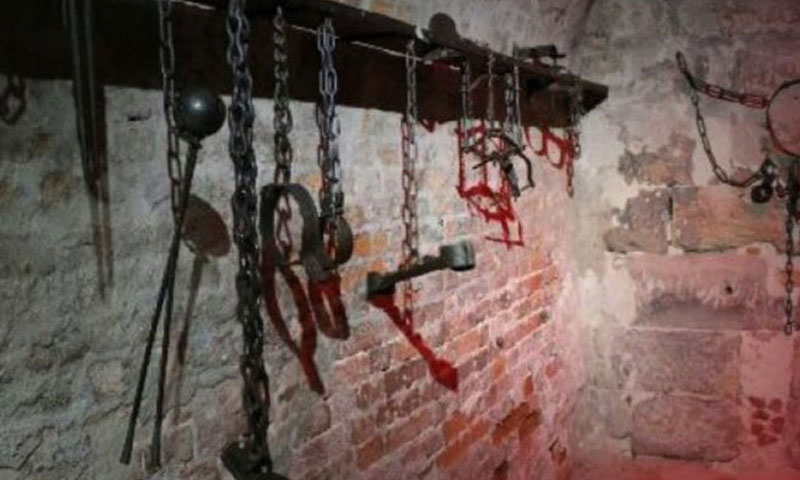



In the past a few weeks, the families of detainees in rural Hama have been increasingly informed of their relatives’ death in the Syrian regime’s detention centers.
The number of detainees in Syria has reached more than 118 thousand, of whom 87% are held in the Syrian regime’s detention centers according to statistics issued by the Syrian Network for Human Rights.
Security branches, usually, give the detainees’ families the personal belongings of their relatives with a small piece of paper, saying that they have passed away due to a medical emergency.
The paper, thus, ends the search journey which the families are keen to undertake for many years, seeking to know the destiny of their family members.
The number of detainees who died due to torture has arrived at 13 thousand to March 2018; most of them were in Assad’s prisons.
Due to international pressure, the regime started changing its policy of reporting the detainees’ death to their families. Abdel Moin al-Masry the head of the Local Council in the village of Qabr Fidda, said that “lately, the regime has been depending on the Personal Status Departments to inform the detainees’ families, to show that the death was the result of natural causes and that it is recorded in the registries, in contrast to what the opposition have been reporting about deaths of the disappeared people and to obliterate the crime and hide its features with a natural death.”
The detainees file has placed the Syrian regime in a critical position relating to international and human rights organization, which incessantly demand that it releases the detainees.
The Personal Status Department in al-Suqaylabiyah has contacted four families in the Qabr Fidda village to go to the Department to undertake the needed procedures as to issue their relatives’ death documents. The families, however, refused to go according to al-Masri.
In an interview with the activist Abu al-Baraa al-Shamali, he said that “a month and a half ago, people started to receive news about the death of their relatives.”
Al-Shamali pointed out that the Department registers the death incident with 2015 as a date, while taking a care that families should not discuss the death issue with anyone.
On average, the number of the detainees reported as dead is two in each of Hama’s towns in the governorate’s eastern and northern rural parts.
Al-Shamali questioned the timing on which the regime resorted to this method, pointing out that it raises a number of questions, since these detainees have been dead in 2015, according to the regime’s narrative, why did it wait to the day to inform their families.?
He attributed this to a Russian pressure that is forcing the Syrian regime to bleach the prisons and an attempt to polish the image of the regime’s head, in addition to making a lie of all reports about forced disappearance and the assassination of activists in prisons.
The detainees file is a key card in the negotiations between the opposition and the regime, and, in previous conferences, the opposition delegation has repeatedly used it as means to impose pressure on the regime.
“Um Ali” is the wife of a detainee from al-Ghab Plain; her husband was arrested in 2012 while working in his land. “A year ago, a military branch informed us of my husband’s death after locating his place. We refused to receive his identity card, hoping that he is still alive. Recently, the Secretary of the Personal Status Department in the al-Suqaylabiyah city has stressed that we review the Department to document my Husband’s death, but I could not go since I am based in Turkey and fearing detention,” she said.
In Hama governorate, the number of detainees is estimated with three thousand persons, with additional undocumented cases, especially in the two cities of Hama and Salamiyah because they are under the regime’s control, which makes it difficult to document detentions.
if you think the article contain wrong information or you have additional details Send Correction